Q&A March
A monthly Digest feature celebrating 20 years of ANAT Synapse, where we ask an ANAT Synapse alumnus about their place within the art + science + technology network.
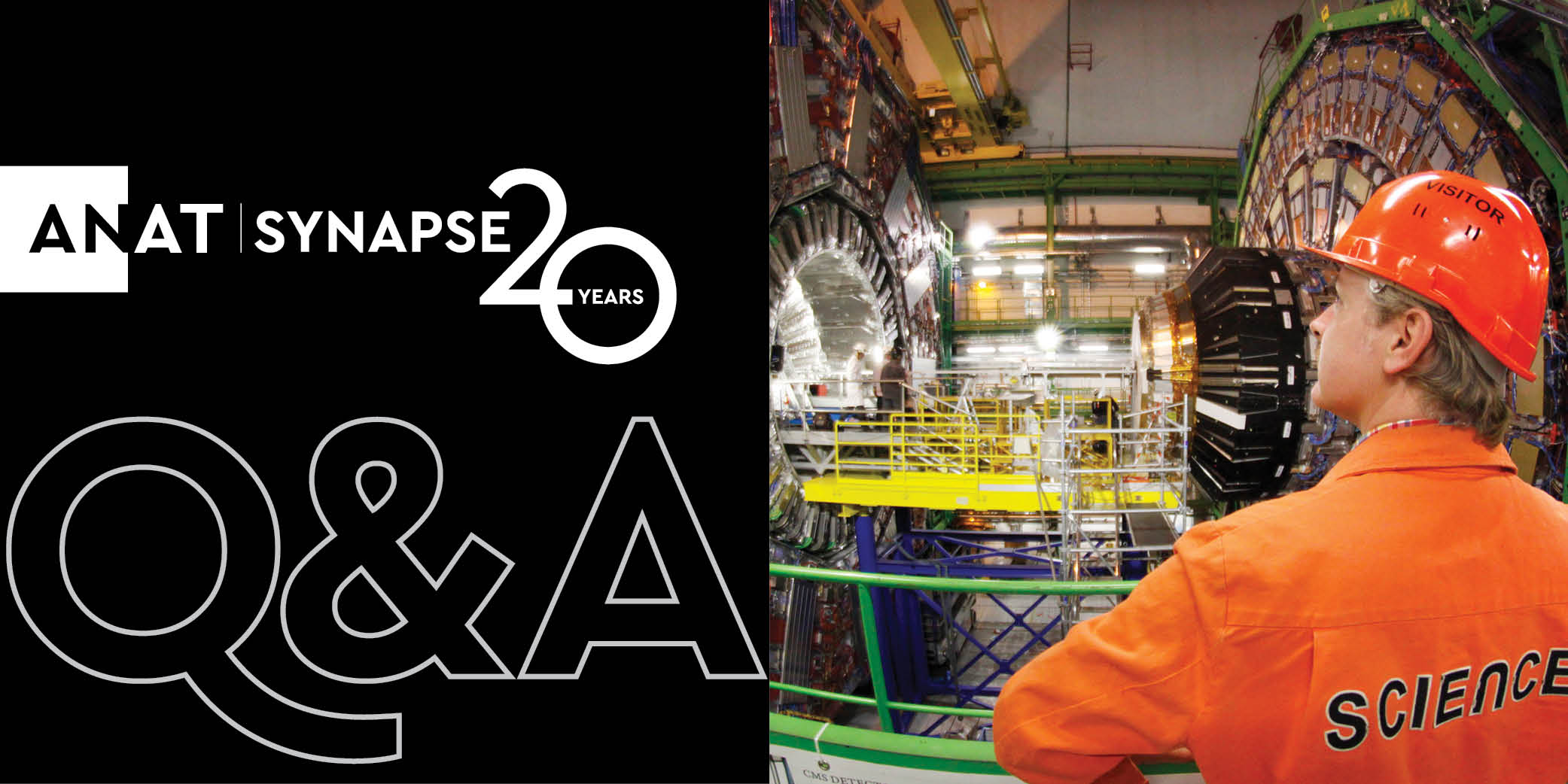
Chris Henschke, 2010 ANAT Synapse and 2018 ANAT Synapse CSIRO residencies recipient, at the CERN CMS (2014). Photograph by Michael Hoch.
Chris Henschke
Chris Henschke is an artist who works with analogue and digital media, using methods and materials from experimental science, and has undertaken experimental interdisciplinary collaborations with scientists since 1991. Residencies include the National Gallery of Australia, 2004; an Asialink residency at Chulalongkorn University Bangkok, 2007; two residencies at the Australian Synchrotron, 2007 and 2010; and an ANAT Synapse residency with the CSIRO in Clayton, 2018-2019. Academic qualifications include a Doctorate of Philosophy from Monash University (2013-2017), comprised of on-site research/practice at the European Organisation for Nuclear Research (CERN), Switzerland, as part of the ‘art@CMS’ collaboration program. Somewhat recent exhibitions include: ‘How Everything Began’ a group show at the Natural History Museum, Vienna, 2016, opened by Nobel Physics laureates Peter Higgs & Anton Zeilinger; ‘Song of the Phenomena’ and ‘Demon Core’, commissioned for DARK MOFO 2019, Hobart; and ‘Synthesism’, an in-situ installation/presentation of his CSIRO nanomaterial experiments, 2019.
Can you tell us about your ANAT Synapse and Synapse CSIRO residencies and where the research has led you?
My first Synapse residency was in 2010 at the Australian Synchrotron in Clayton, Victoria, a ring of magnets 200 metres in circumference, which accelerates beans of electrons to 99% lightspeed. To get up to speed with such a device I did a 3 month ANAT Arts Innovation residency in 2007. Basically, on the second last day of that warm-up residency, I made the synchrotron energy beam sing the tune of the resident cicada, which inadvertently crashed the whole thing – it was my first successful interdisciplinary experiment.
When I undertook the synchrotron Synapse residency in 2010 I had a feel for the machine, and a lot of unspoken questions about the nature of physics, and how physics relates to nature. I explored ways of expressing the subatomic energies represented in the data from the physics experiments and developed various digital and physical “machine studies” (which were exhibited at ISEA 2013). However, these art experiments, which intuitively manifested my questions, felt unresolved. Inexorably perhaps this residency led me to CERN through my synchrotron collaborator, accelerator physicist Mark Boland. The Large Hadron Collider (LHC) at CERN is 26 kilometres in circumference and thousands of times more powerful than the Australian Synchrotron. Unsurprisingly they wouldn’t let me anywhere near their beam controls (but I did meet a physicist who secretly put a bit of Beethoven’s 5th into their beam, in an experiment not unlike mine)! I developed a variety of expressive experiments and unauthorized interventions and installations around CERN, through the “art@CMS” collaboration program (CMS is one of the big detectors in the LHC, about 5 storeys high and weighing in at 200 tonnes).
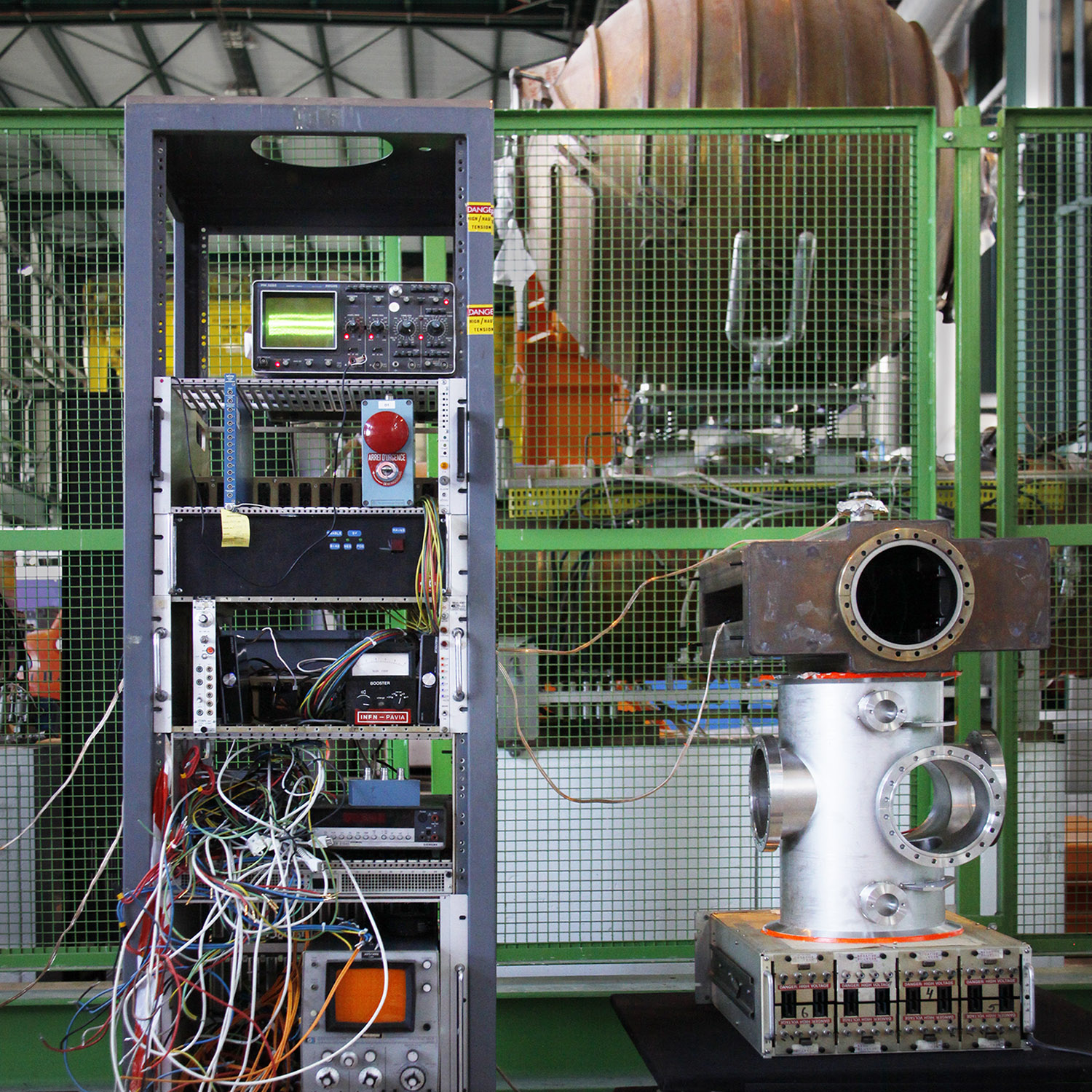
Chris Henschke, Activated Objects (2015), found objects, sonified data, in-situ at CERN CMS.
Over the space of the next seven years, through many intermittent visits (I managed to get a legitimate CERN access card!), and ongoing collaborations with experimental physicists Michael Hoch and Wolfgang Adam, there were a few moments where I felt a connection to the physics, and a resonance with the energies (albeit in a very intuitive way). In expressing particle collision data through multichannel sound installations and sculptures, and re-activating an old linear accelerator with a bunch of bananas, I teased out the expressive and ephemeral forms found within the fundamental foundations of nature. Thus a 3 month residency ultimately led me, via a PhD 10 years later, to resolve the questions I initially had.
Moving up from the subatomic to the molecular scale I undertook a second synapse residency in 2018, creating unique chemical compounds at the CSIRO Materials Manufacturing precinct in Clayton (just across the road from the Synchrotron). This residency was more outcome-driven, but was still experimentally based, and was very hands-on (unlike the realm of particle physics where all you could often get was a bit of data or a blip on a screen). I worked in and with the “Metal Organic Frameworks” (MOF) research laboratory, trying to develop a dynamic substance that macroscopically expressed its molecular form, or in other words, literally create “liquid video.” In a way this bold yet naïve concept almost worked – I created some kind of feedback system with a liquid form of synthesized MOF molecules and an analogue audio synthesizer, and it was doing things that really spun out some of the scientists. I am not sure if it was really expressing its microscopic structure, but it appeared that way, and as it was an art experiment, I did not need to repeat it. That’s maybe one of the key differences between art and science practices – in science, phenomena must be repeatable, but art phenomena can be unique.
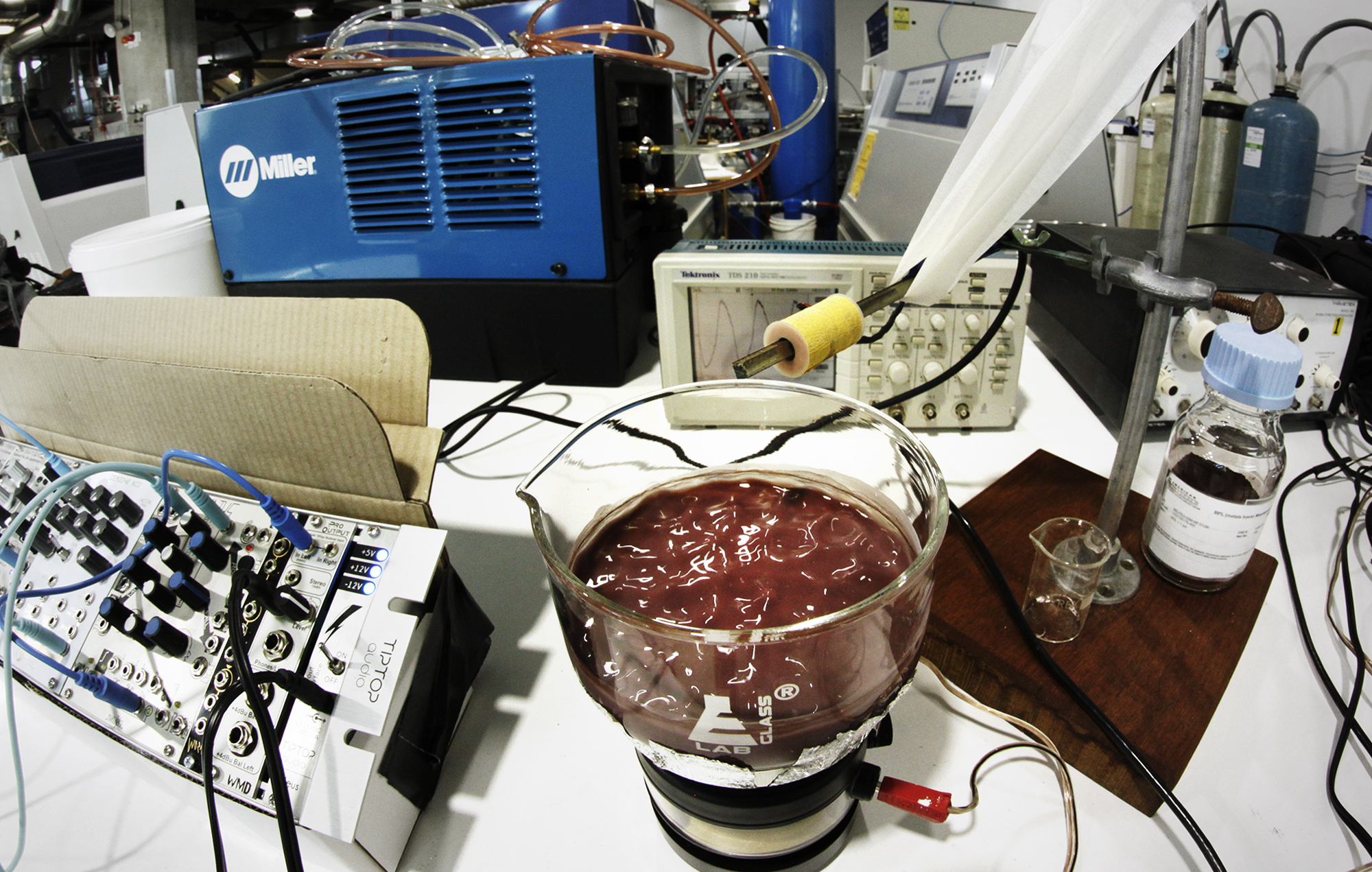
Chris Henschke, Moftopology experiment (2019), manganese metal organic frameworks, audio synthesizer, electromagnetic field detector, in-situ at CSIRO.
As a final post-residency iteration of this Synapse project, in 2019 I overtook an abandoned lab in the CSIRO and set up a series of experiments showing the development of my chemical experiments, which were expressed as a series of in-situ installations. Through this process (and indeed this residency) I was again guided by intuition and came to see alchemy as being basically intuitive chemistry. In response to this project, I wrote a book about art, science and alchemy, titled ”Mudstone”, part of the “Lost Rocks” series of artist books put out by “A Published Event.”
What is the biggest challenge of being an interdisciplinary artist?
Ultimately understanding, which is based upon a combination of communication and trust. In a way, it took about 10 years to get to a stable state working with particle physics, (including the phenomena, the apparatuses, and the physicists!). And it should be noted that this doesn’t mean I tried to become a scientist in that time or undertake experiments to make some scientifically valid discovery, that’s actually a trap artists must be wary of – it’s easy to become bedazzled by the shiny exterior of science and all those big machines. But one must build up trust with the scientists to let them open up to cross-disciplinary dialogue and discussion, which is the other difficult part – trying to find common ground or language for communicating about ideas and processes and understanding both the subtle differences and connections. Many scientists I came across were initially quite dismissive and did not take me seriously – some became even more enraged when I queried or challenged them about their methodologies or philosophies – it can be a very difficult and challenging space to work in.
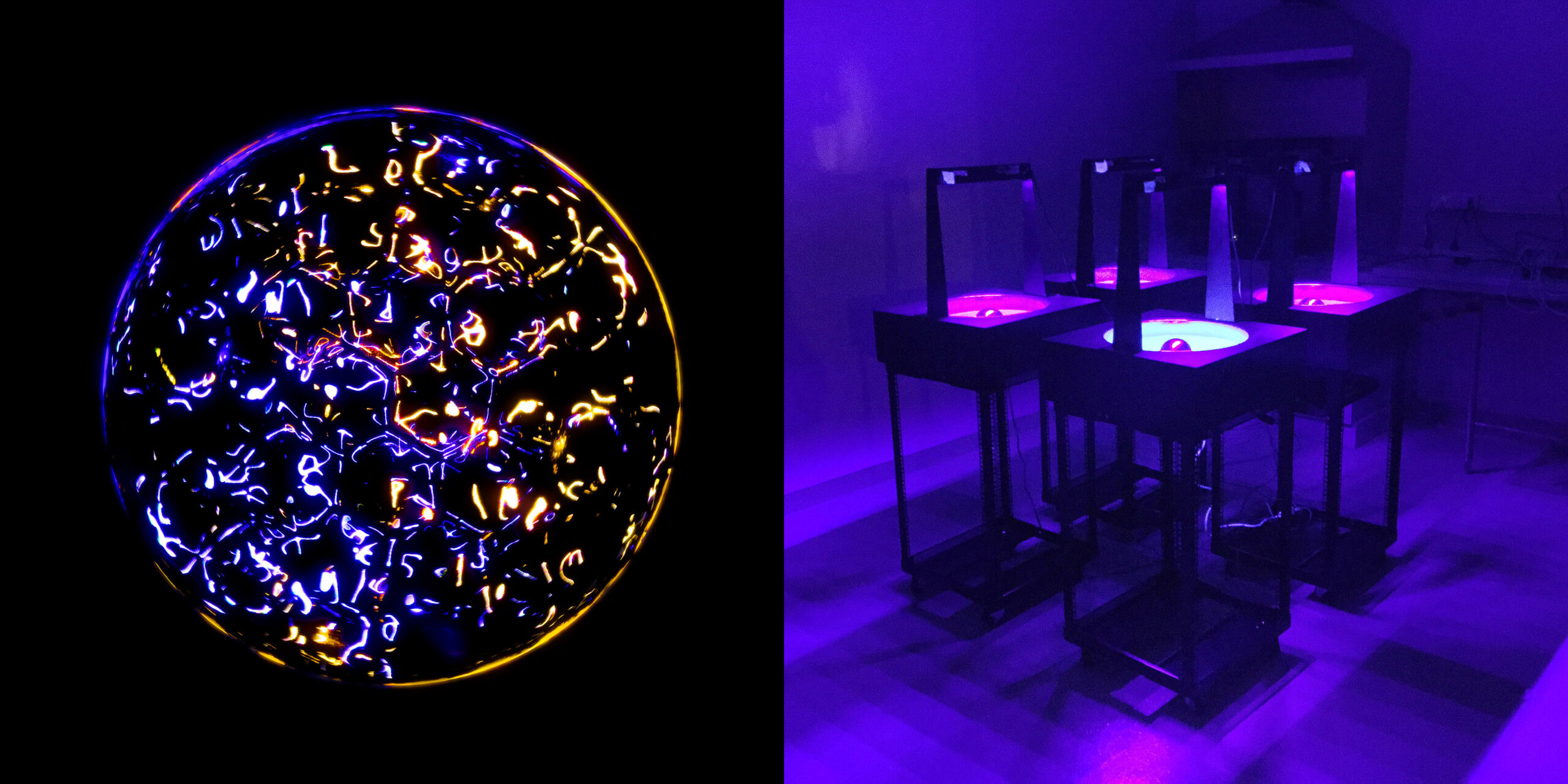
Chris Henschke, Synthesism (2019), CSIRO installation / exhibition, aluminium fumarate metal organic frameworks, audio synthesizer, transducers, lights.
What kind of mentor-mentee relationships have you experienced throughout your years of practice? Is there any particular mentor or mentee that stood out for you?
First and foremost was Mark Boland, an accelerator physicist from the Australian Synchrotron (who now has his own accelerator in Canada). Mark was intrigued by the way I was trying to work with the accelerator – he helped set up my “cicada” experiment and was surprisingly very happy when I “dumped the beam” as they call it. He then collaborated on my 2010 Synapse residency and then became an ANAT board member, and the external supervisor on my PhD. I would not have been able to do what I did without his support and trust. Yet in doing such things, he took a risk amongst his peers, as scientists working with artists can sometimes not be taken seriously. But he said that such collaboration could help him see his own practice in a different way, which is arguably the ‘strong case’ for developing such interdisciplinary art/science projects.
In a similar way, chemist Michael Batten from the CSIRO took a particular interest in my MOF project and went the extra distance to help me develop experiments that manifested the essence of MOFs in ways that were more than representational. He is a guru in “flow chemistry” and is able to coax together materials on a molecular level, and working together we co-created unique experimental setups and molecular entities. Again, he found such challenges quite inspiring, and they may have helped develop his skills and knowledge in ways quite different to his usual practice. Also, such experiments perhaps made him question, where does the science end and the art begin?
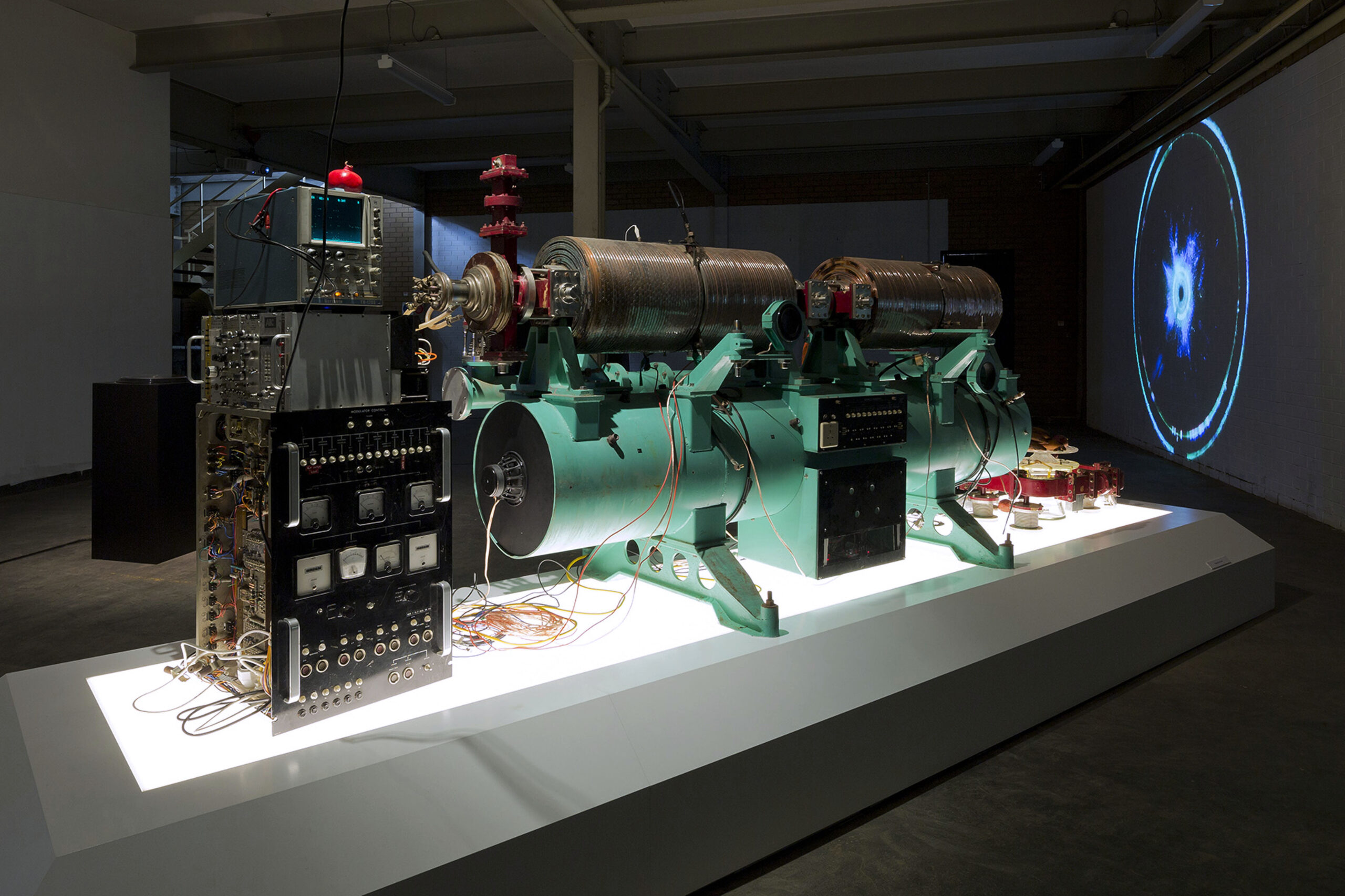
Chris Henschke, Song of the Phenomena (2017), particle accelerator, Geiger counter, audio synthesizer, audio amplifiers, speakers, pomegranates, bananas.
As an interdisciplinary artist, who and what are your biggest influences?
Although I like art and science, ultimately it’s simply nature that is my biggest influence, and the ways in which we as humans try to understand it. And within this there is the paradoxical nature of much contemporary science (and some aspects of society) in that it tries to remove itself from nature, to measure or use or exploit it, but we cannot remove ourselves from the world, we cannot observe the universe from the outside! Such an archaic belief is itself damaging the world and us. Yet there is an increasing awareness of such interconnections, and scientific culture is changing (and I won’t mention quantum physics yet), and also, perhaps there is an undetectable influence from art.
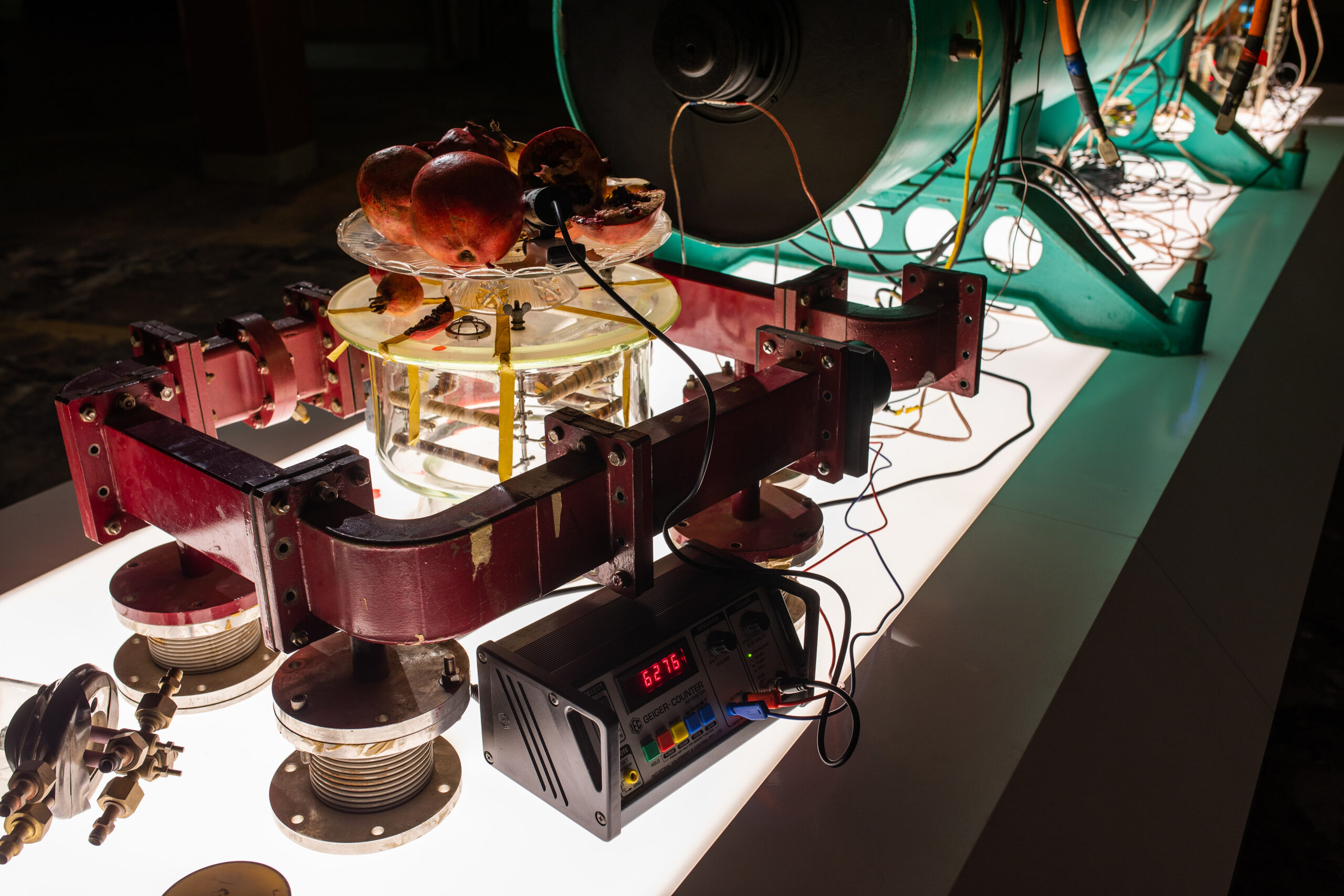
Chris Henschke, Song of the Phenomena (detector edge) (2017), particle accelerator, Geiger counter, audio synthesizer, audio amplifiers, speakers, pomegranates, bananas.
What are you working on at the moment?
Over the last few years, I have been developing a quantum entanglement experiment that fits into a suitcase or two, which actually creates entangled subatomic particles. Such phenomena don’t just appear to link disparate objects and break down our notions of time and space and such, when (subatomic) things are entangled, the very capacity to have separate and independent qualities is dissolved. In a way this project is a challenge to both art and science: how the term “entanglement” is loosely used in the arts; but also to the stranglehold of science upon this strange form of nature, and how some scientists dismiss any other ways to understand and express such quantum phenomena (although didn’t I say above that artists shouldn’t try to be scientists?!) In this way perhaps I’m challenging myself, as well as the dichotomy between these two disciplines, even though I think they are very different. But what connects artists and scientists, as can perhaps be found in such projects, is that through our practices and technologies, we are collectively trying to create meaningful connections with the world around and within us on different levels and in different forms.